Most of us know about taking precautions with our technical devices. Using hard to crack passwords, the most up-to-date antivirus software, hard-hitting firewalls, and additional software security tools may give you a sense of security and keep your business safe from hackers and other villains intent on pinching data or unleashing havoc on your PC via the Internet.
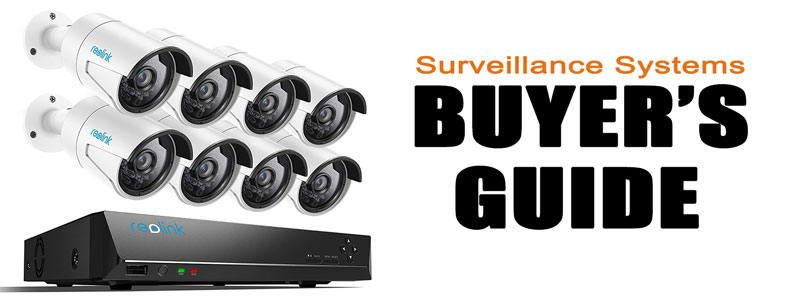
In spite of this, such protections are virtually futile when it comes to protecting your tangible assets from out-and-out theft. The protections won’t alert you when someone has broken your window or forced open your lock and is now helping themselves inside your home, business, office, warehouse, or store, stealing you blind!
An alarm system seems like a reasonable idea; however, you can’t activate your device during business hours or when you are in your home prior to something happening. It’s like putting the cart before the horse. If you need to scrutinize a location in real-time and if you need to record what’s going on when you don’t have the time to fool around staring at a monitor, a video surveillance system is the perfect option.
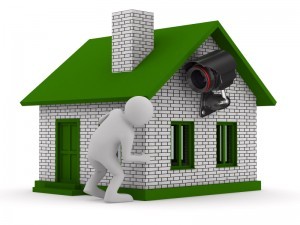
WHAT IS MEANT BY VIDEO SURVEILLANCE?
The term “video surveillance” incorporates a multifaceted assortment of equipment together with cameras, storage, video surveillance software and other diverse hardware. Before the more modernized methods, video surveillance systems operated on analog systems; however, most have changed to IP technology.
The video surveillance industry is quickly developing. Various equipment and features are becoming less expensive and more advanced. High-definition cameras with nearly limitless storage are more accessible, and many homes and businesses have embraced the technology.
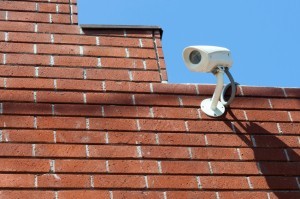
One reputable research firm forecasted exceptional growth in the industry in the last few years as there is an eight to ten year replacement phase for analog cameras, and most will be entering their expiration date before long. This is primarily due to the growth in popularity of high-definition systems. Consumers comprehend the HD concept due to the prevalence of HDTV and the improvement of visual material for software analysis.
Besides the technological advancement of video surveillance systems, many systems are currently capable of covering a longer distance, decreasing costs on the total amount of cameras required to cover an area. Still, there are a number of things to consider before selecting the best video surveillance system for your needs.
Video surveillance is commonly suggested if you are trying to avert thefts and safeguard employees. However today, these very systems are being purchased by homeowners as well. Your needs will determine what type of system you should purchase.
A GUIDE TO BUYING A VIDEO SURVEILLANCE SYSTEM
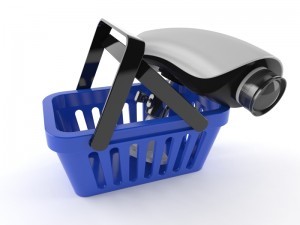
-How Many Cameras Do You Need?
It doesn’t matter if you select a single or multiple video surveillance camera, what’s important is the size and layout of the area that needs surveillance. If you have a large area or several rooms and require tip-top surveillance, more than one camera will be required to get the job done correctly. Overall, most homes and small businesses can be adequately covered with four surveillance cameras.
Make certain that the surveillance system you select can pinpoint important areas you want to monitor, along with doorways and additional entrances such as roofs, windows, anywhere a burglar or thug could most likely gain entrance.
There are various high-performance video surveillance kits on the market that amalgamate several or more cameras, a digital-recorder and hard drive for keeping and transferring images, a video-monitor, and sufficient cable for most installations. In order not to be caught unawares, it’s best to plan for a minimum of one or two additional cameras.
Numerous issues that could pop-up after you’ve begun installing your new system. It’s better to have more than what you need, than not enough when it comes to protecting your property. Most prepackaged and all-in-one surveillance systems are equipped with expandable possibilities; therefore, adding more cameras should not be a problem.
As an overall recommendation, a four-channel DVR is a perfect size for businesses and homes under 2,000 sq ft. An eight-channel DVR is more efficient and capable of covering a small business like a store that wants to keep an eye on their inventory, and for residences up to 3,000 sq ft. For homes and businesses over 3,000 sq ft, a sixteen-channel DVR system is adequate, especially if you are interested in extending your system later on.
-What About Hidden Cameras?
Cameras concealed from view are your best bet if you need to collect data, for one reason or another, without the other person knowing. Then again, conventional security cameras, those that are visible in the area they are recording, assist with deterring break-ins by their presence alone. Criminals will think twice if they think someone is watching.
-There Are Several Key Types Of Video Surveillance Cameras
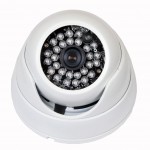
Dome Cameras:
This type of surveillance camera easily mounts on your ceiling, in addition to being an inconspicuous interior surveillance solution. Dome cameras are extremely practical because it’s hard for prowlers to tell in which direction the camera is pointed.
Dome cameras are usually purchased to survey one broad space though they usually point in one direction. The intruder will have no idea, which way the camera is pointing, and sometimes that’s more than enough to deter a break-in.
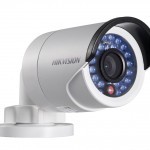
Bullet Cameras:
Bullet cameras are fine for indoor or outdoor usage. These surveillance devices are the most noticeable type of camera and frequently installed under roofs and in corners of buildings.
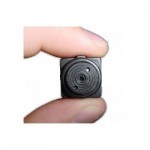
Spy Camera:
This surveillance camera is quite small and can be concealed more or less anywhere. The duration and quality of recording is usually not as full-featured as bullet or dome cameras; however, they are effective at monitoring activities modestly without anyone noticing.
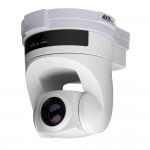
PTZ (Pan/tilt/zoom):
PTZ cameras are equipped with more monitoring and installation features, like turning up-and-down and side-to-side. This allows you a complete 360-degree command post with a single camera. Most PTZ cameras can be remotely controlled, making them a great choice for most one-camera surveillance systems.
If you select remote access, do you want to use a laptop, smartphone, or tablet to monitor your surveillance footage? What about receiving text alerts? If you answered yes, select a system with remote control capabilities.
Color or Black/White:
There is a great deal of flexibility when it comes to black and white or color. Systems that are “color only” can be purchased as a black/white and color system all-in-one unit. If you are watching an outdoor area, particularly during nighttime, it may be advantageous to look for infrared or black/white cameras.
Black/white cameras are much more efficient in low-light, and usually offer enhanced resolution at a lower cost. Color is seldom needed unless there are specific conditions. For instance, if you manage a kiosk and need to establish the color of a vehicle that committed an offense.
Indoor/Outdoor:
Generally less costly than outdoor video surveillance systems, indoor systems focus more on quality than construction. Outdoor cameras are designed to adapt to outside weather conditions.
Outdoor cameras will generally need to cover a broader target area, which could have an effect on the cost of your lens. Resilient outdoor cameras may even have options such as weatherproof-housing and wipers.
Wireless/Wired:
Wireless surveillance camera setups are frequently utilized in homes. They are simpler to install and grant homeowners the flexibility of changing their camera location without the cumbersome task of running new wires.
Bigger homes and businesses may require a more sophisticated solution; therefore, in most instances, a wired camera setup is selected. Wired cameras require cable to run from camera to DVR via low-voltage lines, so there is no need for a contractor for installation.
Analog/IP Digital Cameras:
Analog surveillance cameras relay images through an analog-signal to the DVR. The DVR can pass on this signal over the Internet as one Internet Protocol (IP) address stream. This makes practical usage of bandwidth, and it’s normally less expensive for each camera as well.
IP cameras transmit each camera stream individually with its own IP address. Usually businesses are already equipped with an IP network, which considerably decreases the need for extra cable and hardware.
IP-digital cameras offer a better resolution than analog cameras. If this is important to you, then an analog camera may not be the best choice. Moreover, IP-digital cameras are less vulnerable to intrusion from other wireless gadgets.
Camera Lens:
Whether you require video surveillance for your home or business, you will need to decide which camera lens your system needs. This can be answered by determining the viewing distance and scope.
DO YOU NEED AN INDOOR OR OUTDOOR CAMERA?
Certain video surveillance cameras are purposely constructed for indoor or outdoor use. Indoor cameras are smaller, lighter in weight, and usually less hefty than outdoor designs.
Outdoor cameras usually cost more than indoor systems because they are structured to endure not only the outside environment, but also assaults from thugs and burglars. However, some of today’s more improved and better-designed cameras can be used both in and outdoors.
One unique way to conceal an outdoor surveillance camera is to disgu8ise them as everyday objects. For example, some parks have surveillance cameras disguised as birdhouses. A homeowner may select a hidden camera and built-in digital video recorder disguised as an electrical power-box or a rock.
HOW IS THE LIGHT IN YOUR AREA?
Though many commercial properties are well lit at night, most private residences are not. Thieves are tempted more by unlit or dimly lit areas. To protect an area with bad lighting, invest in an infrared (IR) surveillance video system. IR, or night-vision cameras, can shoot and record in total blackness.
They are crucial instruments in most surveillance situations. Cameras designed to operate in extremely dim light are not authentic infrared models. You can easily find out the illumination of your camera by the manufacturers minimum light “lux” rate. For example, lower lux ratings means that a camera is better at capturing images in low-light.
HOW TO RECORD AND VIEW YOUR SURVEILLANCE VIDEO
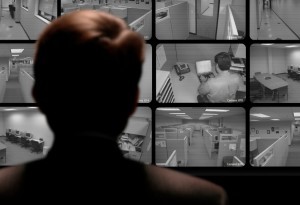
There are a number of means of capturing and storing images from your surveillance cameras. For straightforward security setups, memory-card recording is the most popular. Memory-cards are extremely useful if you are utilizing only one camera in your system. Some cameras come equipped with memory-cards, while others need to be linked to a standalone DVR or digital video recorder.
Cameras with built-in recording are adequate for most basic security needs; however, they come up short as a long-term surveillance solution as they record considerably less data than a dedicated DVR. Recording devices with more memory are able to record longer before overriding previous recordings.
A dedicated DVR is a superior choice for intricate surveillance systems. DVRs are designed to record significantly more video than a standard memory-card. Furthermore, they are obtainable in various versions. Keep in mind that your CCTV system is the center of your video surveillance system, and will play an important part in your general purchase satisfaction.
HOW TO SEE YOUR LIVE FOOTAGE ONLINE
There are a number of choices when it comes to Internet cameras, network video servers, and DVRs. Also identified as IP cameras, these modifiable gadgets permit you to link to the Internet through a broadband network and remotely observe live video from any web browser anywhere worldwide.
After your system has been setup, only Internet access is required. In fact, you can even supervise one or more DVRs or video cameras from your smartphone.
LAST MINUTE INSTALLATION TIPS
-Test, Test, and more Tests
Be sure to test all of your equipment before installation, meaning DVRs, cameras, monitors, and so on. This will give you a chance to become familiar with your equipment.
-Get Your Tool Together
Modern video surveillance systems are produced for long-term reliable use. Bearing this in mind, invest in the right tools to make installation run smoothly and efficiently.
-Get Acquainted
Make certain that you, and another person you can rely upon, are familiar with your surveillance system. Many incidents require quick action and superb attentiveness on your part. Get yourself acquainted with major operations, such as burning-video evidence onto a DVD.
-Inspect Your System
Inspect your system at least every 30 days. Furthermore, you should test critical functions, and check each camera to ensure they are functioning properly. Log in remotely occasionally, to make sure you are at ease monitoring your home or business by remote so your coverage does not falter if you are away.
MAKING UP YOUR MIND
Remember that buying a video surveillance system is mostly motivated by your basic needs; therefore, cost will fluctuate. You can spend as little as $50 or spend $1000s. It’s best to be practical with your decision by weighing the pros and cons of each system and how it works with your lifestyle and your needs.
Wireless Video Surveillance System FAQS
A wireless video surveillance system differs from traditional video surveillance systems in that the cameras used are not connected to the main system by wires. This allows users more freedom in where they can install the cameras.
Cameras are also less likely to be detected if they do not come with wires and thus much more suited for prolonged monitoring situations where the cameras need to stay hidden. Here are some common questions users ask when buying or installing a wireless video surveillance system.
What is the difference between wired and wireless systems?
The main difference between the two is the presence or absence of a wire running from the camera to the recording or viewing device. Wireless cameras use transmitters that send data to the recorder or monitor which eliminates the need for a cord.
The recorder or the monitor receives the signals through a receiver which is connected to the video input jack in the recording or viewing device.
What is the range of a wireless camera system?
A typical wireless system has a range of 700 feet but this also depends on the number and type of barriers present. Commercial grade transmitters have an indoor range of up to 3000 feet.
Do I need a special recorder or monitor for wireless systems?
No, as long as the device can be connected to a receiver, it can receive data from any remote camera. This includes any VCR, TV or camcorder and even computers that have video input jacks.
How long can a camera record?
This will depend on the device. Standard VCRs can record up to 10 hours’ worth of footage. Long play recorders can store up to more than 900 hours of footage. Digital storage devices can store even more.
Will cordless phones interfere with camera transmission?
This will depend on the frequency on which the phone operates. Users must determine the frequency of the cordless phones and choose a different frequency for their wireless surveillance systems to avoid any problems. Interference will result when both devices are in the same frequency.
Can I program my cameras to start recording when something moves?
Yes. Most manufacturers allow their cameras to be configured to start recording when it detects movement. The cameras can also be set to start recording according to a schedule, such as 10 in the evening or in the morning as the homeowners leave for work.
Can I access my video recordings online?
Yes. Most manufacturers and security system providers grant users online access to their cameras wherever they are in the world. There are companies that give users a specific password that they can use to log in to the program and access separate cameras that are actively recording in their house.
Why do I need a DVR card?
A DVR card is a device that allows users to convert their computers into digital video recorders. This card can be installed in the PCI slot of the computer. A DVR card is often bundled with security surveillance software and allows users to display more than one camera from the camera site or a remote location.
